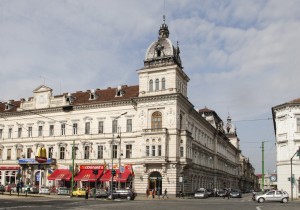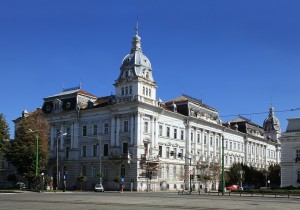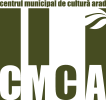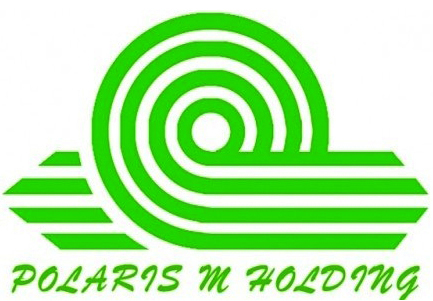The building of the National Bank was built during 1909-1910 and projected by architect József Hubert from Budapest. The Romanian National Bank, branch Arad, was located here from the beginning.
History
The National Bank Palace is a building situated on the Revolution Boulevard of Arad. It was built between the years of 1909-1910 after the plans of architect József Hubert from Budapest.
The National Bank of Romania (BNR) is the Central Bank of Romania with legal personality. This is an independent public institution, headquartered in Bucharest, and has branches and agencies both in Bucharest and in other towns.
The National Bank was founded in 1880 with an initial capital of 30 million lei (10 million from the State capital and the remaining 20 million mainly privately owned by the Brătianu family). BNR is the 13th Central Bank founded in the world, older that Japan’s Central Bank or the Federal Reserve of the USA. The first banknote issued by the BNR was that of 1000 lei, used until 1933.
By 1948, the institution became private, controlled by the iron hand of its shareholders, which have repeatedly defied the government’s own party, the National Liberal Party.
Architecture
The central part of the edifice was influenced by the model of Greek temples. Above the entrance, there are four columns, topped by a triangular tympanon, with a beehive at its peak – the symbol of the institution. The symmetric side sections show elements of Renaissance style.
Similar tourist attractions
The Administrative Palace of Arad is a significant work of eclectic architecture, currently hosting the City Hall of the municipality and the Institution of the Prefect of Arad County.
Neumann Palace, built in the past as a private residence with a special architecture, accommodates today commercial spaces and spaces of „Vasile Goldiș” Western University of Arad.
The building was built between 1892-1894 by Arad-Cenad Railway Company. The plans were made in the workshop of architect Miklós Ybl in Budapest and subsequently adapted by Lajos Jiraszek.





